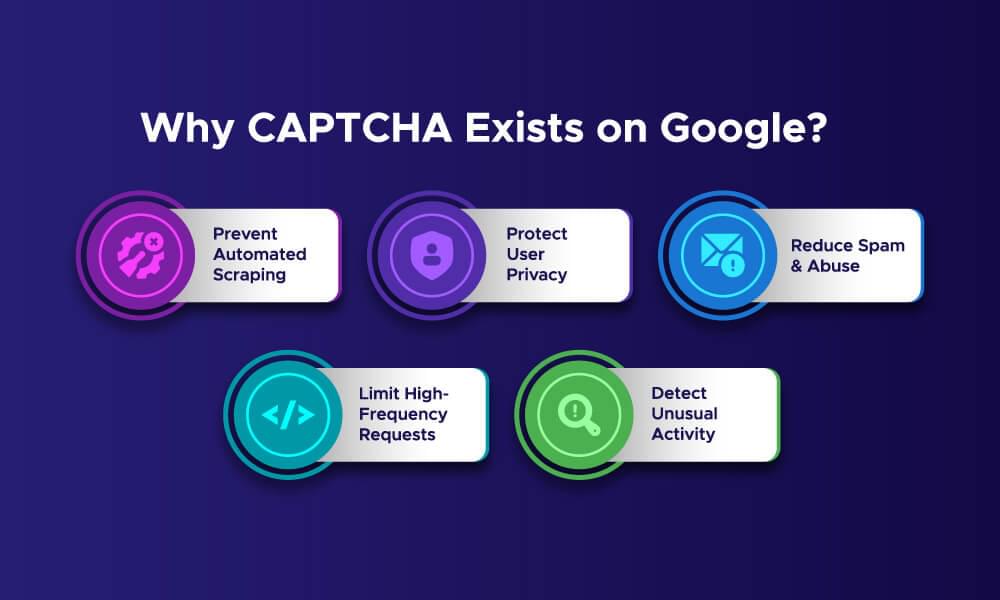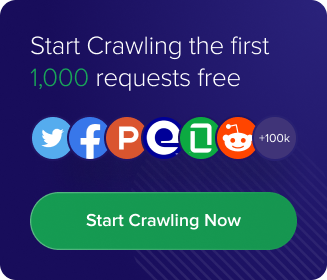Scraping Google Search Results is useful for SEO research, market analysis, and data collection, but Google has strict security measures to block bots. One of the biggest challenges is Google CAPTCHA, which appears when it detects unusual activity from an automated script.
CAPTCHA (Completely Automated Public Turing test to tell Computers and Humans Apart) is designed to stop bots by asking users to solve puzzles, identify images, or check a box. If you’re scraping Google at scale, these CAPTCHAs can slow you down or block your access completely.
In this guide. we’ll explain why Google uses CAPTCHA, how it detects bots, and the best ways to bypass CAPTCHA while scraping Google. We’ll explore techniques like rotating proxies, user agents, headless browsers, and the Crawlbase Crawling API, which can help you scrape Google without interruptions.
Let’s get started!
Table of Contents
- Types of CAPTCHA Used by Google
- How Google Detects Bots
- Using Rotating Proxies and User Agents
- Implementing Headless Browsers
- Slowing Down Requests to Mimic Human Behavior
- Using CAPTCHA Solving Services
- Crawlbase Crawling API for Hassle-Free Scraping
Why CAPTCHA Exists on Google
Google uses CAPTCHA to stop bots from scraping its search results. Websites use CAPTCHA to protect user data, prevent spam, and stop excessive automated requests that could slow down their servers.

When Google sees unusual activity like rapid searches from the same IP or repeated scraping attempts, it triggers a CAPTCHA challenge. This way, only real users can continue to browse while bot scripts are blocked.
For web scrapers, Google CAPTCHA is a major hurdle, making it challenging to extract search results for SEO tracking, competitor research, and market analysis. But with the right techniques you can bypass CAPTCHA while scraping Google and get data without interruptions.
Understanding CAPTCHA Mechanisms
Google uses advanced CAPTCHA systems to catch bots. To scrape Google successfully, you need to understand how it works and what triggers it.
Types of CAPTCHA Used by Google
🔹 reCAPTCHA v2 (“I’m not a robot” Checkbox) – Requires you to check a box or solve an image challenge.
🔹 reCAPTCHA v3 – Runs in the background and gives you a bot score based on your behavior.
🔹 hCaptcha – Similar to reCAPTCHA, it asks you to identify objects in images.
🔹 Text-based CAPTCHA – Requires you to enter distorted letters or numbers.
How Google Detects Bots
Google looks at various factors to detect automated scraping:
✅ IP Address & Request Rate – Too many requests from the same IP can trigger CAPTCHA.
✅ User-Agent & Browser Fingerprint – Google flags non-human browsing patterns.
✅ JavaScript & Mouse Movements – No human-like interactions will flag you as a bot.
✅ Cookies & Session Tracking – Scrapers without proper session handling will get blocked.
Now that you know these principles, you can use smart CAPTCHA bypass strategies to scrape Google without getting blacklisted.
Effective Methods to Bypass CAPTCHA
To bypass Google CAPTCHA while scraping, you need to use smart techniques that mimic human behavior and avoid detection. Here are the best ways to scrape Google without getting blocked.
Using Rotating Proxies and User Agents
✅ Rotating Proxies – Switch between different IP addresses to avoid rate limits and detection.
✅ User-Agent Spoofing – Use real browser user agents to make requests appear like human browsing.
✅ Residential Proxies – These proxies use real user IPs, reducing the risk of CAPTCHA triggers.
Implementing Headless Browsers
✅ Use Puppeteer, Selenium, or Playwright – These tools simulate human browsing behavior.
✅ Enable JavaScript Execution – Some CAPTCHA checks rely on JavaScript; headless browsers handle it like a real user.
✅ Mimic Mouse Movements & Clicks – Helps bypass reCAPTCHA challenges that detect bots.
Slowing Down Requests to Mimic Human Behavior
✅ Randomize Request Intervals – Avoid sending too many requests in a short time.
✅ Use Delays Between Actions – Mimic natural browsing by pausing between searches.
✅ Limit Scraping Speed – Prevents Google from flagging your IP as suspicious.
Using CAPTCHA Solving Services
✅ Third-Party CAPTCHA Solvers – Services like 2Captcha and Anti-Captcha can bypass CAPTCHAs automatically.
✅ AI-Based CAPTCHA Bypass – Some solvers use machine learning to break CAPTCHAs in real time.
✅ Balance Cost & Efficiency – These services work well but may add extra costs to large-scale scraping.
Crawlbase Crawling API for Hassle-Free Scraping
✅ Bypasses CAPTCHA Automatically – No need for proxies, headless browsers, or solvers.
✅ Handles JavaScript Rendering – Extracts complete Google search results without getting blocked.
✅ Rotates IPs & Mimics Human Browsing – Ensures smooth scraping without triggering CAPTCHA.
Using these methods, you can scrape Google search results efficiently while avoiding CAPTCHA challenges.
Scraping Google SERP Without Getting Blocked
Scraping Google search results can be complex due to strict anti-bot measures, but using the right approach can help you get the data without the CAPTCHA. Instead of manually handling IP rotation, user-agent spoofing, and request delays, you can use a reliable method that will scrape smoothly.
For a detailed step-by-step guide on how to scrape Google SERP without getting blocked, check out our blog:
👉 How to Scrape Google Search Results with Python
In this guide, we cover:
✅ Setting up your Python environment for scraping Google.
✅ Using the Crawlbase Crawling API to bypass CAPTCHA automatically.
✅ Extracting search results data like titles, links, and descriptions.
✅ Avoiding IP bans with built-in anti-detection techniques.
Instead of manually dealing with complex CAPTCHA bypass methods, the Crawlbase Crawling API simplifies the process by handling JavaScript rendering, proxy rotation, and CAPTCHA solving for you.
Read the full guide and start scraping Google search results without getting blocked!
Final Thoughts
Scraping Google without CAPTCHA requires the right ways and tools. Rotating proxies, user-agent spoofing, headless browsers, and CAPTCHA-solving services can help. However, managing these manually is a pain and time-consuming.
A better solution is to use the Crawlbase Crawling API, which automatically bypasses CAPTCHA, handles JavaScript rendering, rotates IPs, and mimics human browsing behavior. So you can scrape Google SERP’s smoothly, efficiently and scalable without getting blocked.
For a hassle-free experience, use Crawlbase’s web scraping solutions and extract Google search data today!
Frequently Asked Questions
Q. How can I bypass CAPTCHA while scraping Google?
To bypass CAPTCHA while scraping Google, you can use methods like rotating proxies, user-agent spoofing, and headless browsers to mimic human behavior. Crawlbase Crawling API is another way to bypass CAPTCHA, JS rendering, and IP rotation so you can scrape Google without getting blocked.
Q. Why does Google show CAPTCHA when scraping search results?
Google shows CAPTCHA when scraping search results to protect its search results from automated bots and to prevent excessive scraping. CAPTCHA challenges ensure only human users can access the data, bots are blocked. This is to prevent spam, unauthorized access, and server overload caused by automated scraping.
Q. Can I scrape Google search results without getting blocked?
Yes, you can scrape Google search results without getting blocked by using strategies like slowing down requests, rotating IP addresses, and using CAPTCHA-solving services. The best approach is to use the Crawlbase Crawling API, which handles these challenges automatically so you can scrape Google SERP’s smoothly and at scale.










